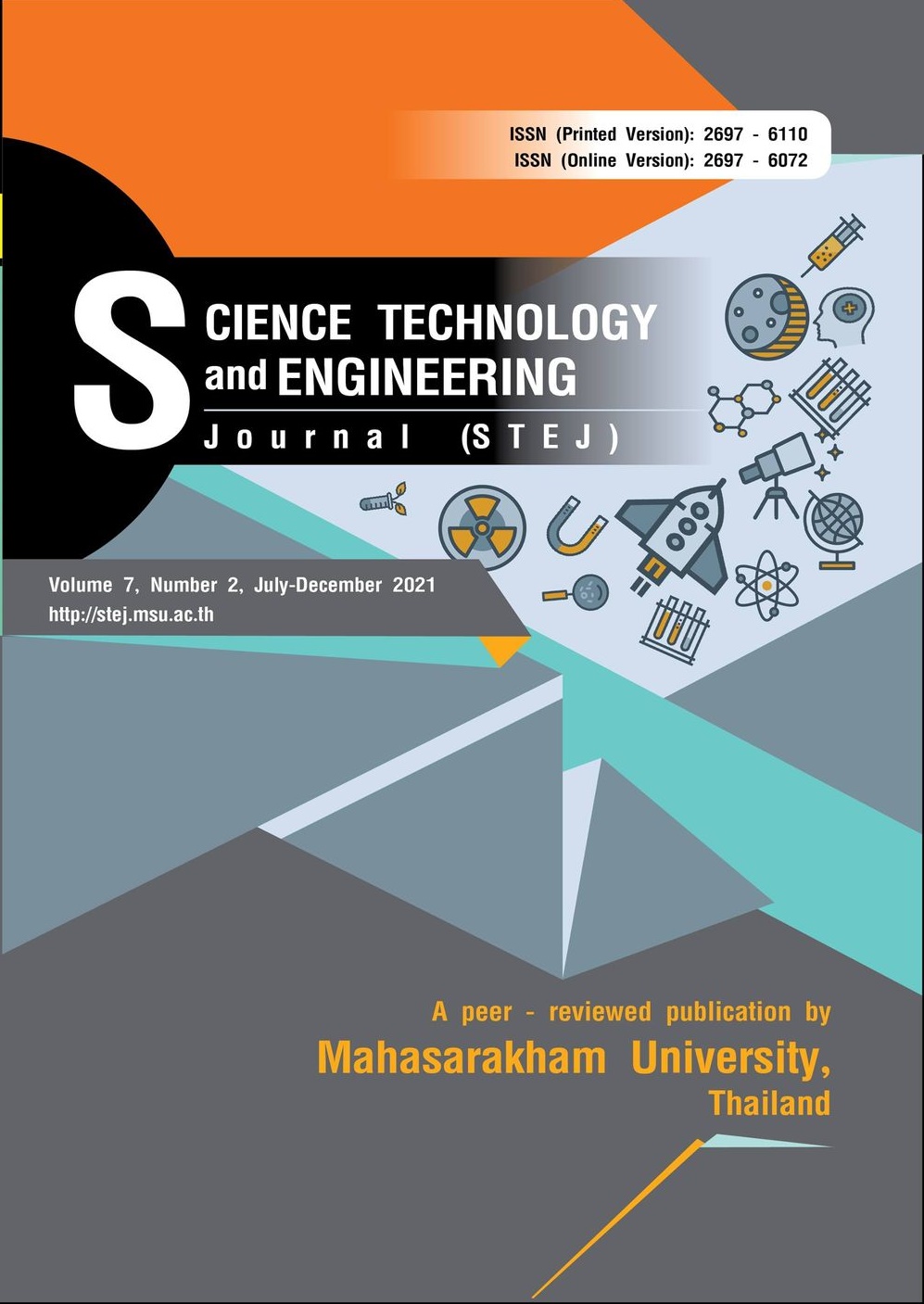The Stability Diagram of a Single-Electron Transistor
Keywords:
Stability diagram, single-electron transistor, quantum dotAbstract
A single-electron transistor (SET) is a promising technology, superseding a traditional transistor. This device needs to be accurately controlled by external voltage sources because this sophisticated structure is operated in the submicron scale. Quantum phenomena are employed to control a single-electron flow through the SET framework and to keep the electron in this framework. The number of excess electrons is important since it indicates the state of the device. External potentials can disturb the state constant. To forecast and specify the state, a mathematical model of the state transition was built. The model was then plotted as a stability diagram. The electrostatic energy was considered and analytically solved for the model. In this way, the complicated mathematics involved in this quantum phenomena could be simplified. The result strongly correlates with stability diagrams that were previously reported, however, the approach was different.
References
Amakawa, S., Tsukagoshi, K., Nakazato, K., Mizuta, H., & Alphenaar, B. W. (2004). Single-electron logic based on multiple-tunnel junctions. Mesoscopic Tunneling Devices.
Beenakker, C.W. (1991). Theory of Coulomb-blockade oscillations in the conductance of a quantum dot, Physical Review B, 44, 1646.
Bruijn, D.S. (2015). Mapping electron tunnelling in a nanoparticle network to a cellular neural network [Bachelor's thesis]. University of Twente.
Devoret, M.H., Esteve, D., & Urbina, C. (1992). Single-electron transfer in metallic nanostructures, Nature, 360, 547-553.
Droulers, G., Ecoffey, S., Pioro-Ladrière, M., & Drouin, D. (2017). Metallic single electron transistors: Impact of parasitic capacitances on small circuits, IEEE Transactions on Electron Devices, 64, 5202-5208.
Grabert, H., & Devoret, M.H. (2013). Single charge tunneling: Coulomb blockade phenomena in nanostructures. Springer Science & Business Media.
Hayt W.H., & Buck, J.A. (1985). Energy and Potential in Engineering Electromagnetics. Mc Graw-Hill.
Hofheinz, M., Jehl, X., Sanquer, M., Molas, G., Vinet, M., & Deleonibus, S. (2006). Simple and controlled single electron transistor based on doping modulation in silicon nanowires. Applied Physics Letter, 89, 143504.
Likharev, K.K. (1999). Single-electron devices and their applications, Proceedings of the Institute of Electrical and Electronics Engineers, 87 (4), 606-632.
Scholze, A., Schenk, A., & Fichtner, W. (2000). Single-electron device simulation. IEEE Transactions on Electron Devices, 47, 1811-1818.
Wallisser, C., Limbach, B., Vom Stein, P., Schäfer, R., Theis, C., Göppert, G., & Grabert, H. (2002). Conductance of the single-electron transistor: A comparison of experimental data with Monte Carlo calculations, Physical Review B, 66, 125314.
Downloads
Published
How to Cite
Issue
Section
License
Copyright (c) 2021 Food Agricultural Sciences and Technology (FAST)

This work is licensed under a Creative Commons Attribution-NoDerivatives 4.0 International License.







